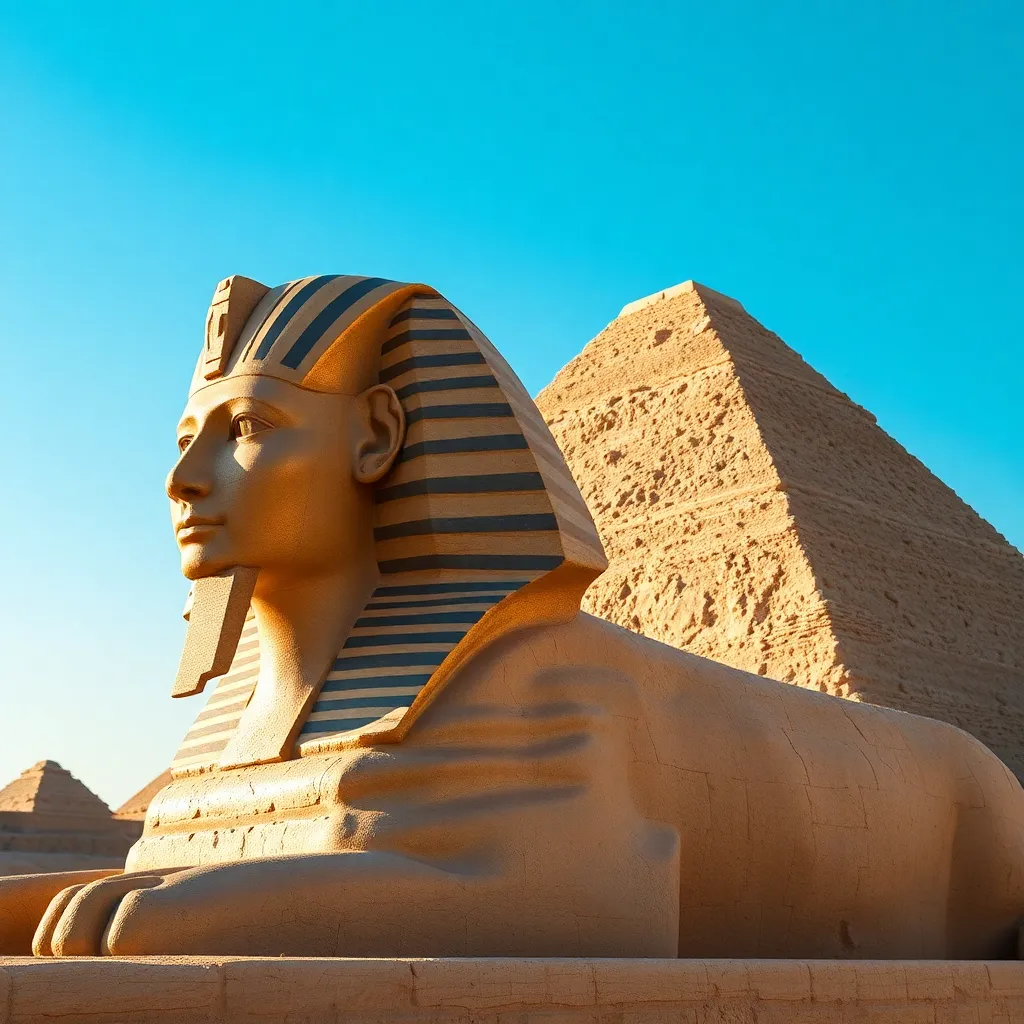The Female Sphinx: A Look at Gender in Egyptian Myths
I. Introduction
The Sphinx is one of the most iconic figures in Egyptian mythology, often depicted with the body of a lion and the head of a human. This creature has intrigued scholars and enthusiasts alike for centuries, serving as a symbol of mystery, power, and protection. While the male Sphinx is the most recognized representation, the concept of a female Sphinx opens up a fascinating dialogue about gender roles and representations in ancient Egyptian narratives.
Gender plays a crucial role in mythological stories, influencing the characteristics, roles, and perceptions of various deities and creatures. Through exploring the female Sphinx, we can gain insights into how women were viewed in ancient Egypt and how their representation has evolved in modern interpretations.
II. The Symbolism of the Sphinx
The Sphinx holds a significant place in Egyptian culture, symbolizing strength, wisdom, and mystery. The historical significance of the Sphinx can be observed in its architectural presence, notably the Great Sphinx of Giza, which stands as a monumental guardian of the pyramids.
Some characteristics of the Sphinx include:
- A blend of human and animal forms, representing duality and complexity.
- Role as a guardian of sacred spaces, often associated with the protection of the pharaohs and the afterlife.
- Symbol of enigma, embodying the mysteries of life, death, and the universe.
The gender implications of the Sphinx are profound, as its protective nature can be seen as a reflection of both male and female qualities. The female Sphinx, in particular, may symbolize nurturing strength, wisdom, and the duality of femininity.
III. The Female Sphinx in Mythology
While the male Sphinx is more commonly represented in art and literature, there are notable instances of female Sphinxes in mythology. These representations often highlight the distinct qualities attributed to women in ancient narratives.
Key distinctions between male and female Sphinxes include:
- The female Sphinx often embodies traits of nurturing and protection, contrasting with the male’s more aggressive and dominant representation.
- Female Sphinxes may be associated with specific goddesses, enhancing their divine role and significance.
Some key myths featuring female Sphinxes explore their role in protecting sacred spaces, as they were believed to possess the wisdom to guard against intruders and ensure the safety of the afterlife.
IV. Gender Roles in Ancient Egypt
Understanding gender dynamics in ancient Egyptian society is essential for analyzing the female Sphinx’s role. Egyptian culture exhibited a more nuanced view of gender compared to contemporary societies, where women could hold significant power and influence.
The portrayal of goddesses and female figures in mythology highlights the complex nature of femininity in ancient Egypt:
- Goddesses such as Isis and Hathor represent motherhood, fertility, and wisdom.
- Female figures in mythology often possess strengths that complement their male counterparts, indicating a balance of power.
The intersection of gender and power is also evident in the reign of female pharaohs, such as Hatshepsut and Cleopatra, who defied traditional gender roles to claim authority and influence.
V. The Female Sphinx as a Metaphor for Femininity
The attributes of the female Sphinx can be analyzed in relation to broader themes of femininity. This creature often embodies qualities such as:
- Mystery: The enigmatic nature of the Sphinx reflects the complexities of womanhood.
- Wisdom: The association of the Sphinx with knowledge and insight showcases the importance of female intellect.
- Strength: The protective role of the female Sphinx symbolizes the resilience and power of women.
In comparing the female Sphinx to other female mythological figures across cultures, we can observe similar themes of strength and mystery, reinforcing the universal representation of femininity in myth.
VI. Artistic Representations of the Female Sphinx
The artistic depiction of the female Sphinx offers valuable insights into how gender was interpreted in ancient Egyptian culture. Artifacts and sculptures from various periods illustrate the evolving representation of female Sphinxes:
- Early representations often blend features of both male and female, highlighting the duality of the Sphinx.
- Later artworks may emphasize more feminine characteristics, reflecting changing societal views on gender and divinity.
The influence of gender on artistic interpretation and symbolism is evident in how female Sphinxes are portrayed with softer features and nurturing postures, which contrast with the more formidable male representations.
VII. Contemporary Interpretations and Relevance
In recent years, there has been a resurgence of interest in gender studies within Egyptology, prompting modern scholars to revisit and reinterpret ancient narratives. Feminist perspectives on the female Sphinx emphasize the need to acknowledge and celebrate women’s roles in mythology.
Contemporary discussions surrounding the female Sphinx inform broader conversations about gender and power, encouraging a reexamination of traditional interpretations that may overlook the significance of female figures in ancient myths.
VIII. Conclusion
In summary, the female Sphinx serves as a vital lens through which we can explore gender in Egyptian mythology. Understanding her role reveals the complexities of femininity in ancient narratives and the ongoing impact of these stories in modern society.
As we reflect on the significance of the female Sphinx, it becomes clear that these narratives encourage us to challenge traditional interpretations of gender and recognize the strength and wisdom embodied by women throughout history. Further exploration of these themes will enhance our understanding of ancient cultures and their enduring legacies.




